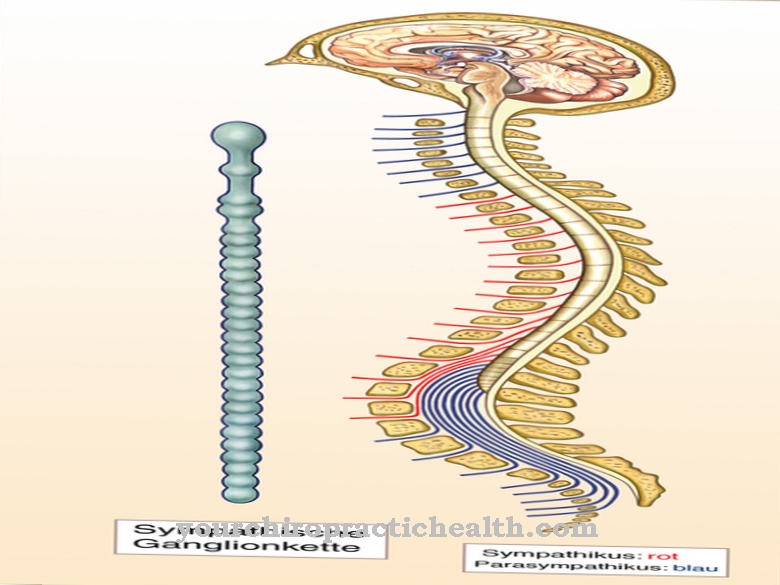As with all endoscopies, the Laryngoscopy (or. Larynxoscopy) therefore, internal organs, the larynx, are present for the purpose of an examination. In the case of the larynx in particular, a reflection cannot be dispensed with, since alternative methods such as x-rays cannot depict the larynx in the way that is necessary for the detection of diseases in the lining of the larynx.
What is laryngoscopy?

In the Laryngoscopy the human larynx is viewed from within. The reasons why this is necessary can vary. Due to the painless and usually side-effect-free course, the first signs of a disease of the larynx can be the reason to examine it more closely as part of a laryngoscopy.
Persistent hoarseness that does not go away on its own after a few days can be one of these reasons. The same applies to pain in the throat and pharynx, which are often associated with penetrating bad breath and are considered a sure sign that there may be an inflammation in the larynx.
Function, effect & goals
After all, that serves Laryngoscopy to detect the formation of tumors at an early stage and to initiate countermeasures such as surgical removal as quickly as possible. Smokers in particular are advised to visit the ear, nose and throat doctor (ENT doctor for short) regularly for preventive examinations in order to have a laryngoscopy performed on them. The reason for this recommendation lies in the increased risk of smokers developing a larynx tumor. Preventive examinations are therefore all the more urgently necessary.
As already mentioned, the laryngoscopy is performed by an ENT doctor, who has specialized in it as part of his practical training. A medical distinction is made between direct and indirect laryngoscopy.
Indirect laryngoscopy, which ENT doctors do much more frequently than direct laryngoscopy, is primarily used to examine the anterior sections of the larynx. To do this, the doctor holds the patient's tongue with one hand in order to operate the so-called larynx mirror with his other hand. This medical instrument is a small, round mirror that is attached to the top of a metal pin. This enables the doctor to examine the larynx even where he cannot look due to the angle.
Indirect laryngoscopy does not require any preparation on the part of the patient. In comparison, direct laryngoscopy is more difficult. First of all, the patient must not be conscious. This means that he will be given an anesthetic before the examination begins. Then the patient's head is tilted back a little. So that the teeth are not damaged by the metallic instruments during the examination, the patient is given a mouthguard.
Then a hollow metal tube is inserted through the patient's mouth up to the upper entrance of the larynx and fixed there. The doctor then inserts his endoscope through this tube; a "tube-like instrument" with a camera installed at the top end with which the doctor can examine the larynx on the monitor.
If he detects suspicious areas that deviate from the normal mucous membrane, the doctor can take tissue samples with his endoscope during the direct laryngoscopy and later send them to the laboratory for histological examination, i.e. for the fine-tissue analysis of the mucous membrane sample. The direct laryngoscopy takes between 15 to 30 minutes, depending on the case.
You can find your medication here
➔ Medicines for hoarsenessRisks, side effects & dangers
Risks are usually neither direct nor indirect Laryngoscopy connected.
The mere fact that the doctor accidentally damages the larynx while examining it could be a possible risk, although this is the rarest exception.
Greater forces would have to arise in order to damage the larynx and its vocal cords, which can then no longer be an accident, but an intent. With direct laryngoscopy, possible side effects in the form of sensitivity to the anesthetic agent administered also come into consideration.












.jpg)



.jpg)










.jpg)
